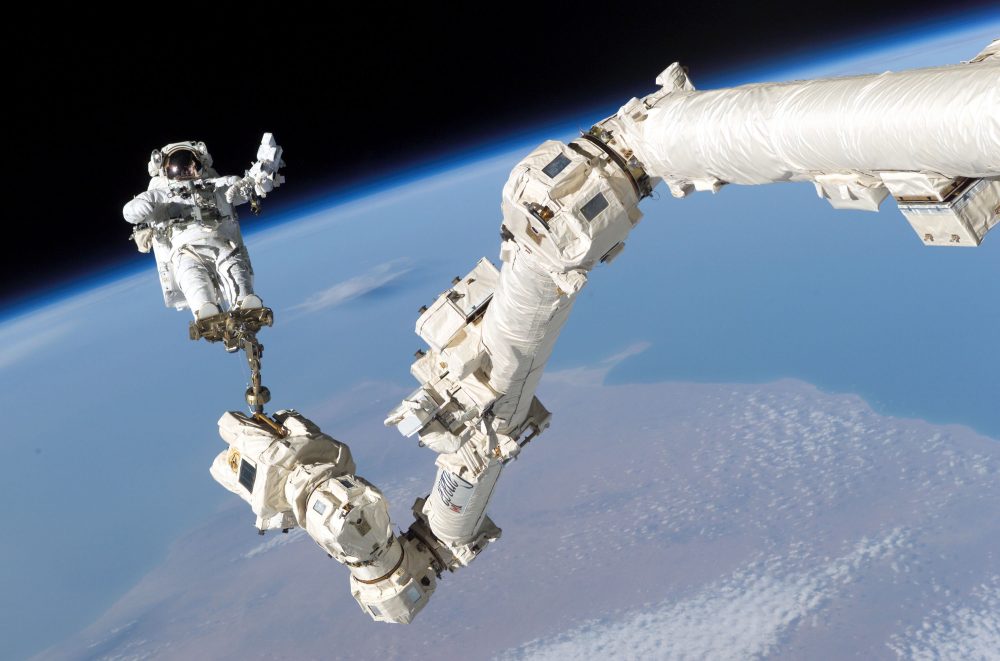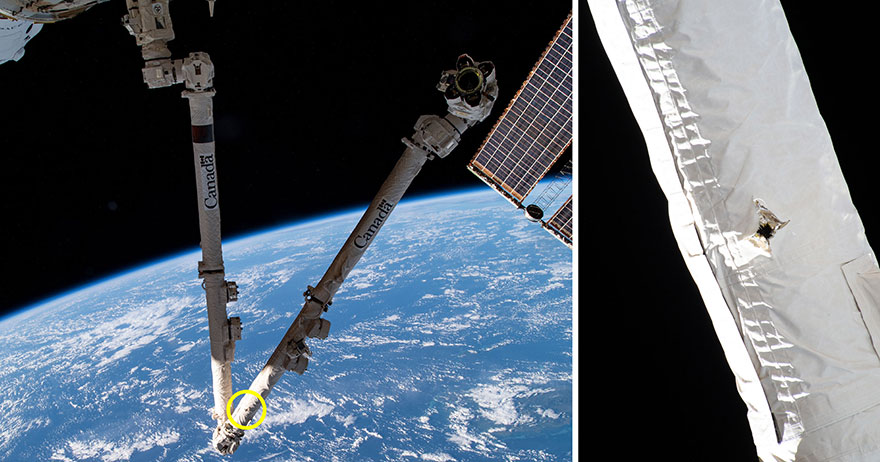A piece of space debris struck the International Space Station (ISS) and damaged its robotic Canadarm2 sometime last month, according to Canadian officials.

Thankfully, the damage wasn’t enough to stop the Canadian-made arm from carrying on with its duties, the Canadian Space Agency (CSA) said.
The CSA says the arm was damaged in a “lucky strike” by a tiny object at some point, although it’s unclear exactly what it was or when it happened.
Astronauts on the ISS found evidence of the strike on May 12, when they discovered a five millimetre-wide puncture hole in the device’s arm boom and thermal blanket.
NASA and the CSA worked together to assess the damage, which appeared to be minor and will not affect the arm’s performance.
Gilles Leclerc, director general of space exploration at the CSA, hailed the incident as an example of the robotic arm’s sturdy construction.
“This shows the threat of orbital debris as much as robust Canadarm2 engineering with 20 years of intense space station operations,” he tweeted on Wednesday morning.
The Canadarm2 is a 17 metre-long robotic arm that is used to conduct maintenance and capture incoming cargo ships for the ISS. The arm was built in 2001 and is made with replaceable components so that it can easily be repaired in orbit.
Space agencies track thousands of bits of debris in orbit at all times and do their best to direct satellites and the ISS away from potential collisions. The debris travels at approximately 28,000 km/h and can puncture critical systems like a bullet shot from a gun — a threat that can be potentially devastating to astronauts living in the sealed environment of the ISS.

“Even tiny paint flecks can damage a spacecraft when traveling at these velocities,” NASA says on its website. “In fact, millimeter-sized orbital debris represents the highest mission-ending risk to most robotic spacecraft operating in low Earth orbit.”
The ISS has changed position dozens of times to avoid such impacts in orbit, though experts can’t always predict exactly when or where a threatening piece of junk might hit.










Comments